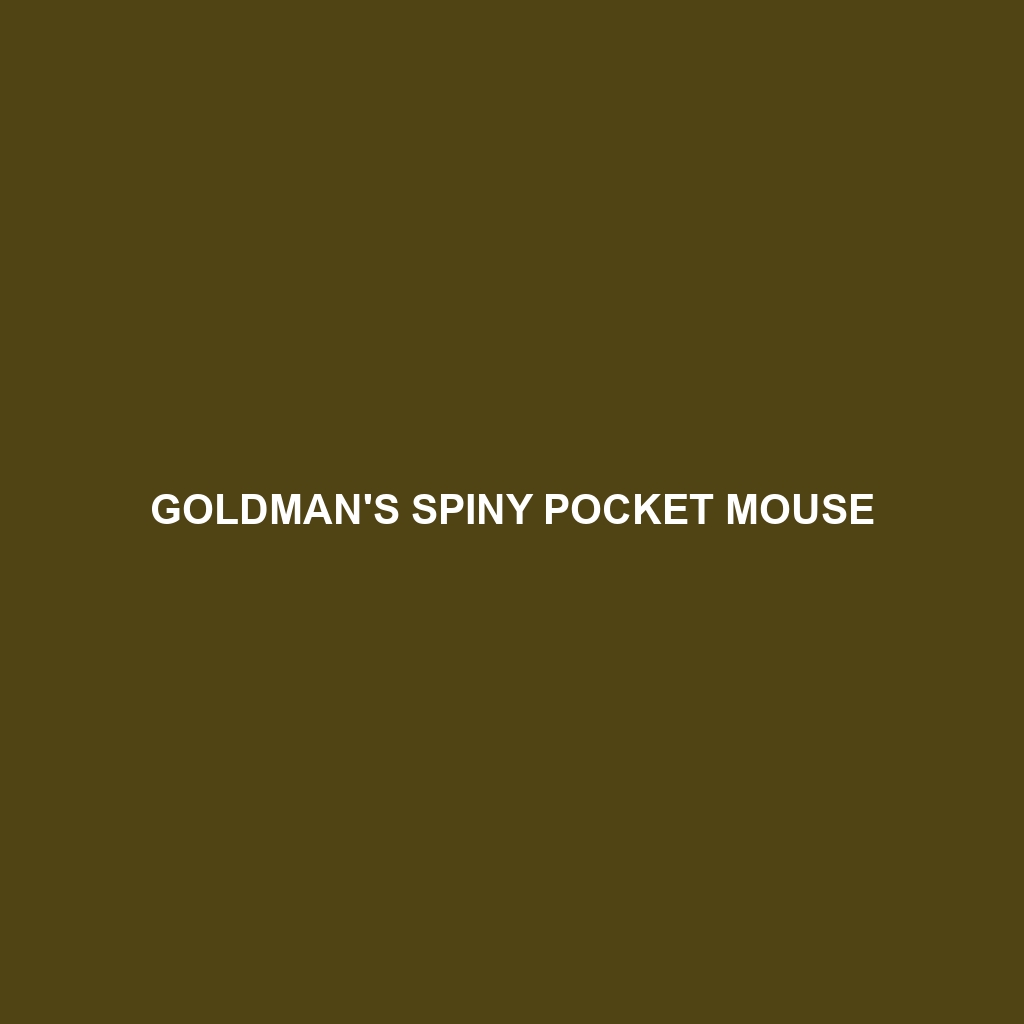Goldman’s Spiny Pocket Mouse
Common Name: Goldman’s Spiny Pocket Mouse
Scientific Name: Chaetodipus goldmani
Habitat
Goldman’s Spiny Pocket Mouse is primarily found in the arid regions of central Mexico. This small mammal inhabits dry shrublands, grasslands, and rocky hillsides where the vegetation includes various cacti and shrubs. Its preference for sandy soils makes it well-adapted to environments that provide ample burrowing opportunities.
Physical Characteristics
Goldman’s Spiny Pocket Mouse typically measures around 7 to 10 inches in length, including its tail, which can account for nearly half of its total body length. Its fur ranges from light brown to gray, featuring a series of distinctive spiny hairs that give it a unique appearance. The species also has large eyes and ears, well-suited for its nocturnal lifestyle, allowing it to be agile and alert in its habitat.
Behavior
This species is primarily nocturnal, being most active during the night when it forages for food. Goldman’s Spiny Pocket Mouse is known for its agile movements and ability to climb, which aids in escaping predators. It often communicates through a series of chirps and squeaks, particularly during breeding seasons. During the day, it seeks refuge in burrows, which it digs to create complex tunnel systems for shelter.
Diet
Goldman’s Spiny Pocket Mouse has a herbivorous diet that includes seeds, fruits, and green vegetation. It is particularly fond of grasses and various plant seeds, often storing excess food in its cheek pouches. This adaptive feeding behavior allows it to thrive in harsh environments where food sources may be limited.
Reproduction
Goldman’s Spiny Pocket Mouse breeds mainly during the rainy season, which can vary by region but generally lasts from late spring to early fall. The female typically gives birth to a litter of 2 to 5 offspring after a gestation period of about 30 days. The young are weaned after approximately three weeks and reach sexual maturity within a few months, contributing to the species’ rapid population turnover.
Conservation Status
Currently, Goldman’s Spiny Pocket Mouse is considered to be of least concern according to the IUCN Red List. However, habitat destruction and changes in land use pose potential threats to its population. Conservation efforts are essential to ensure the stability of its habitat and maintain this species’ existence in the wild.
Interesting Facts
– Goldman’s Spiny Pocket Mouse is notable for its ability to survive long periods without water, obtaining hydration through its food.
– This species plays a crucial role in seed dispersal, which benefits its ecosystem by helping maintain plant diversity and health.
Role in Ecosystem
As a small herbivore, Goldman’s Spiny Pocket Mouse plays an integral role in its ecosystem by aiding in seed dispersal and serving as a food source for larger predators such as snakes and birds of prey. Its burrowing activities also help aerate the soil, fostering a healthier environment for plant growth and contributing to the overall health of its habitat.
